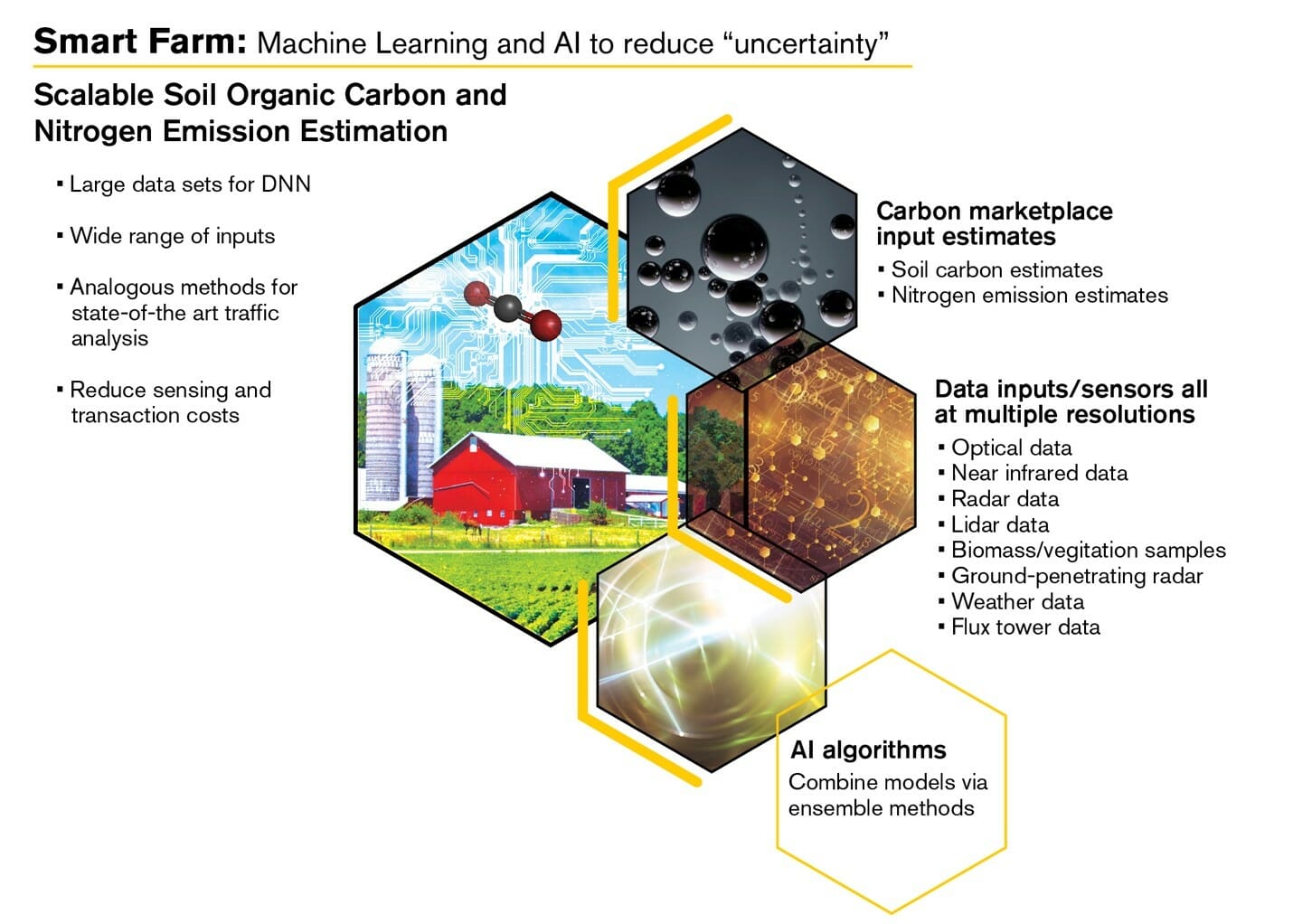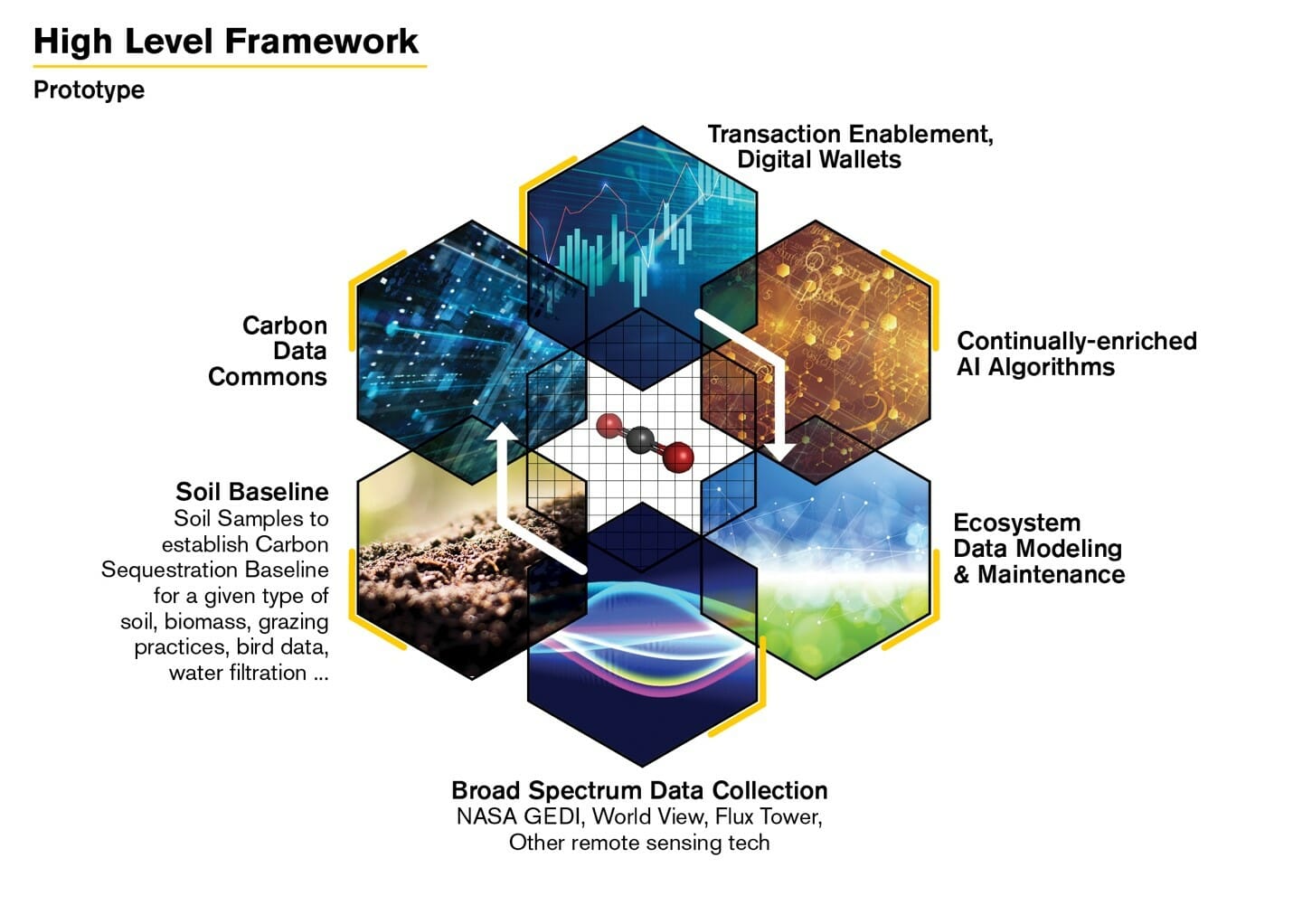The Digital Carbon Warehouse
An EarthX talk by Bill Brandt
April 24, 2020
Common sense tells us that “in the long run, it will be more profitable to save the planet than to ruin it.” So how do we mobilize at scale, engaging as many of us as possible and involving all who may want to participate in sequestering carbon? We can all do our part with some “smart” assistance.
The global pandemic may offer us some insights on how we may be able to mobilize on climate change. Defeating COVID 19 has to be a joint project — as the New Yorker observed — it’s like going to the moon together. To make this moon trip together, we will need to use 21st century collaboration tools. The important idea is to engage in collaboration at scale and to make it possible for contribution at scale. A prototype example is a COVID 19 public collaboration, the MiPasa Project, which is using IBM’s Blockchain Platform to support the data streaming. According to Forbes, this project is utilizing data analytics and privacy tools for the public health analysis of COVID-19. MiPasa is designed to make it possible to synthesize data sources, address their inconsistencies, help identify errors or misreporting and seamlessly integrate data. The team members are a multi-participant, multi-disciplinary group of health professionals working alongside are software developers and privacy experts to gather reliable, quality data, to make it accessible so we can collectively be smart about the current health crisis. Creating “an information highway,” the project cross-references siloed location data with health information. Additional robustness comes with inclusivity -if you want to help you can join through Unbounded Network.
We know that modern agriculture was not designed with climate impact in mind. Approximately 26% of our global GHG emissions come from agriculture — imagine if we can incentivize a change to how we ranch and farm for the benefit of the planet and our health? In the agriculture community there are scientists working with farmers exploring the concept of regenerative agriculture, a practice that demonstrates the ability to sequester carbon and improve soil health. Example of these techniques include cover crops, no till crops, or adaptive multi-paddock grazing — and they all help sequester carbon back into the soil, while at the same time improving soil health and drought resilience.
The C40 cities have taken bold climate action, leading the way towards a healthier and more sustainable future. There are 500 million people in C40 cites. What If this group of people could act collectively in their climate commitment through the food that they buy? We know that the organic label has created a major consumer following and if we build off this experience and add to it the learnings from collaboration in the COVID 19 crisis? If we create a new operational framework linking customers to their food source, then consumers can make choices that reduce carbon emissions.
At ASU LIghtWorks® we are working with enabling “smart tools” — tools such as blockchain, machine learning and artificial intelligence. These collaboration tools may have the potential to compress the time it takes to create adoption. Can you imagine a moment where one can ask “Alexa” to make carbon smart recommendations to you?
So, imagine that you want to purchase a zero-carbon cappuccino, if your milk comes from a dairy that produces renewable natural gas and delivers the milk to your coffee shop in an electric vehicle, then you may have a zero-carbon drink. What if you are travelling, so you now you can now rely on your smart assistant to give you an alternative to a zero-carbon drink. “Alexa, I need a zero-carbon cappuccino!” Alexa, by interacting with data in the supply chain, can find a personal solution from a trusted data source. Providing track, trace and verification all the way back to a farmers and rancher. This smart system also creates a second business for the ranchers and farmers in that they can be sellers of carbon offset credits that have been certified and verified. The smart application can create new trusted markets and a tailored net-zero-carbon drink for you.
At ASU, like other universities and companies, we have been exploring how platforms using blockchain are emerging to make it possible for permissioned use of the data that will enable us to make that zero-carbon purchase decision. We envision a concept which we are calling the digital carbon warehouse. The warehouse needs to be an open platform for providing information. But block chain can allow this data to be held in a trusted format where certain permissions can be granted on how the data is accessed. This is similar to a public lending library where you borrow a book and then return the book. When I was growing up, the librarian would check the book back in and certify that there were no alterations or damage. So now we can do this with data that will allow programs to “borrow” insights from the data. The encryption technology lets the data owner ‘know’ that the data has been ‘returned’ and that the data has not been tampered with. The blockchain allows one to be 100% sure the data is secure and provides auditable logs at 100% trust (not 99%).
So, turning back to the farmer or rancher practicing regenerative agriculture, how do we know that the sequestered carbon is actually in the soil? nd that it is a permanent addition to sequestered carbon. At ASU we are working with colleagues in research grants to determine how one might do this. Soil carbon is not easy to measure because in the soil it is not distributed uniformly. So, to do an assessment on a large field is a big job and requires taking 1-meter2 core samples. This is expensive and time consuming.
So, researchers are proposing to use other data — from satellites, LIDAR and other landscape data sensors that may create a reliable proxy for the sequestered soil carbon. By combining models with ensemble methods, we believe that it may be possible to reduce the track, trace and verification costs by using this data. So, if the average U.S. farm is 0.7 square miles, then we can use non-intrusive sensors to give us a high certainty on how many tons have been sequestered. Over time, we can track and trace this even over decades.
The digital carbon warehouse can function as a platform that can link with for-profit services too. For example, if a forest is registered for stored carbon in the digital warehouse, this sequestered carbon product can also be insured for risks like fire. Perhaps the insurance company will buy ranch sequestered carbon as an offset or a hedge?
So, the digital carbon warehouse enables the ‘smart farm’ to connect with carbon smart consumers creating a circular carbon economy. This enables supply chains to link more intimately with their customers, adding significant value to a label like ‘organic.” It enables tracking and tracing with which can create benefits for ranchers and farmers and for all consumers, including reducing our carbon footprint. If we can create a significant market where we are collectively all in, then this will help build momentum for some of the other steps like artificial trees.
“Alexa – Please order my zero-carbon cappuccino and deliver it to me at ASU.”
Thank you.



